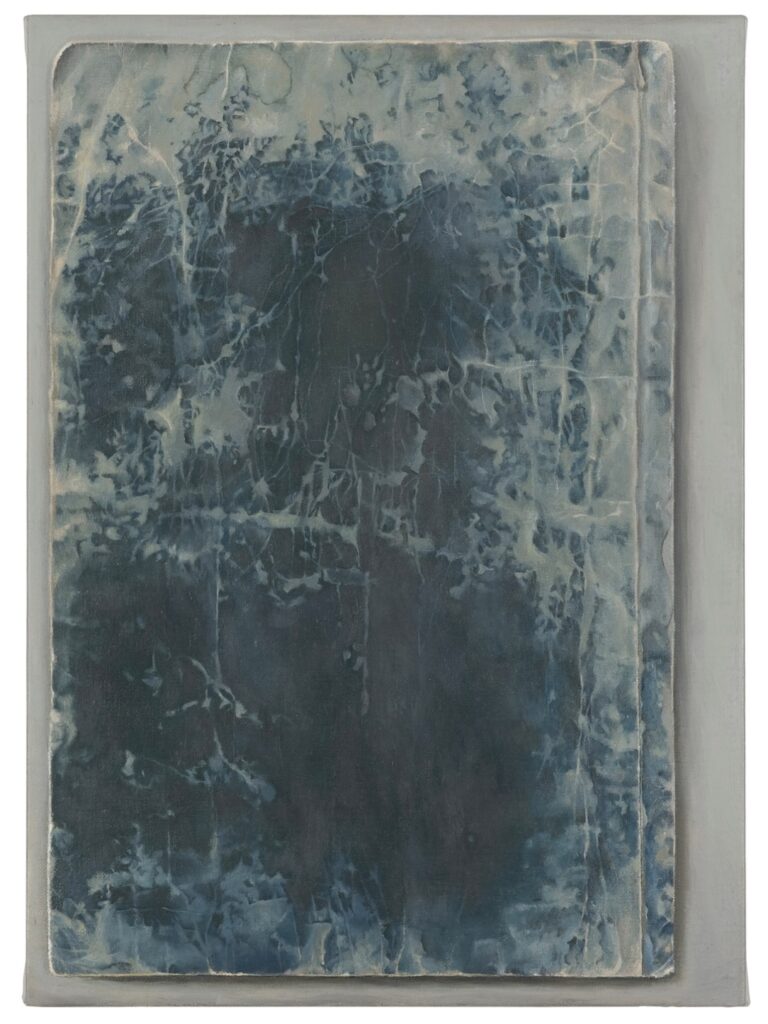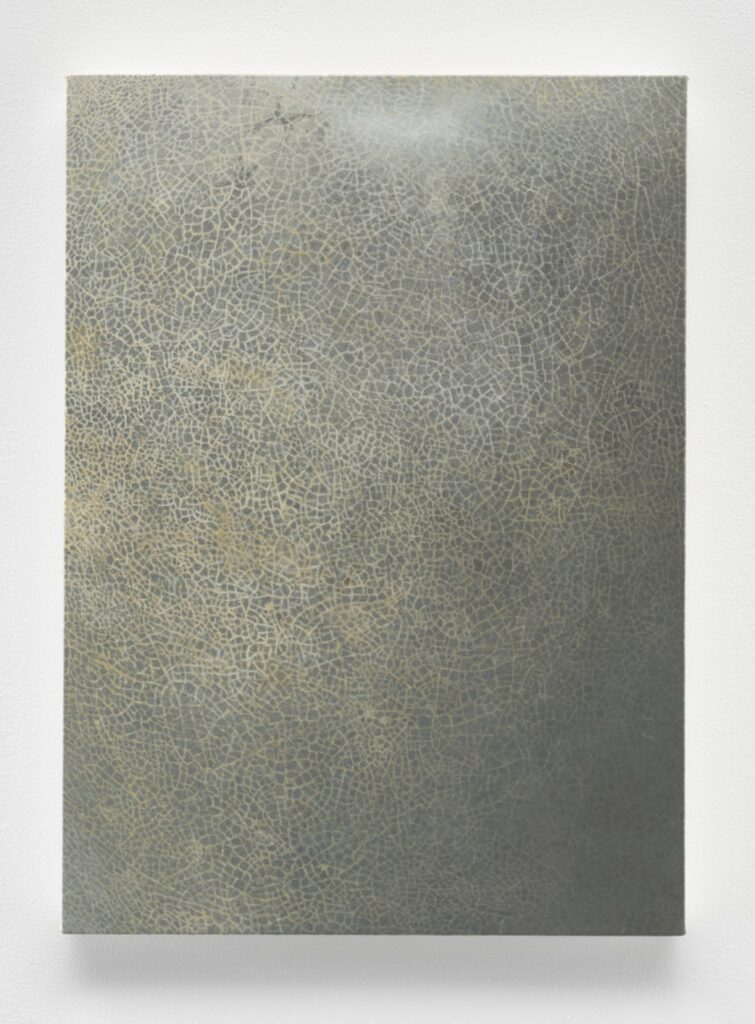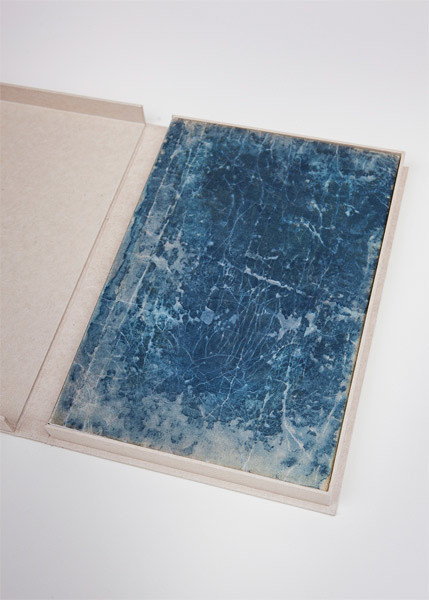
When Vija Celmins spoke to Tyler Green in 2013 about her painting Japanese Book (2007-10), she called it “an object and a painting, but with a much closer relationship than I had in the 60’s, which was obviously a painting of an object.”
Which is kind of wild because the thing that immediately registered on seeing this painting at the Met Breuer in 2019 was how clearly it was a painting of an object. Unlike Celmins’ paintings of sand, stars, or waves, Japanese Book does not fill the entire canvas. It sits in a space, with depth and shadows—like a book on a scanner bed—and with its extraordinary, textured, indigo cover. Painted.
Celmins’ works are so often paintings of photographs, which are objects in their own way, and maybe that’s what she was referring to from the 60s, when she’d paint clippings, or envelopes, alone or in stacks. Japanese Book‘s a painting of a surface, an object, so not an image. She told Tyler, in discussing Shell (2009-10), “that kind of surface that’s very, very fractured with small areas make it kind of retinally engaging and physically engaging.”

Which she would go on to paint, literally, in Vase (2017-18), also at the Met. The craquelure surface of a Korean celadon vase fills the canvas. But with the shadowy corner that seems to map the curved form of the vase, the object-painting relationship is even closer. Yet this scale of detail requires magnification; this is, again, I think, a painting of an image, if not a photo.
[a few minutes later update]: Sal Randolph shouted out The Stars, the extraordinary artist book Celmins created with Eliot Weinberger in 2005 for the MoMA Library Council. One of Celmins’ three etchings in the book is on the book: a 10 1/2 x 17 inch depiction of the entire cover of the Japanese book.

I was going to say the four-plate etching was a facsimile, but I don’t know that is the case. Also, there is a facsimile edition of the book, which is widely and affordably available. The signed limited edition of 130 went to the Library Council and various institutions, who are not big flippers. The deluxe edition, which includes an additional loose copy of one of the bound etchings, does turn up.
If it took Celmins three years to make a painting of this book cover, I think it’s safe to assume the etching was made from a photographic reproduction.
Japanese Book (the painting) is on view in the Fondation Beyeler’s Celmins retrospective through 21 Sept 2025 [fondation beyeler]
